Quantum Computing and the reality of the metaphysical world. Do you think the scientists in this realm will ever catch up to the Physics and Science God created? Cubits and Qubits all that quarks!
Were they in Search of the God particle. . .Science in this realm is only Beginning to catch up to God and HIS Science as He is the Creator of it ALL!
For example cubits in the Bible
Cubit
A linear measure roughly the distance from the elbow to the tip of the middle finger. The Israelites commonly used a cubit of about 44.5 cm (17.5 in.), but they also used a larger cubit that was one handbreadth longer, about 51.8 cm (20.4 in.).
Genesis 6:15
King James Version
15 And this is the fashion which thou shalt make it of: The length of the ark shall be three hundred cubits, the breadth of it fifty cubits, and the height of it thirty cubits.
Luke 12:25
King James Version
25 And which of you with taking thought can add to his stature one cubit?
From Answers in Genesis
Do we really know the size of Noah’s Ark (Genesis 6:15), the Ark of the Covenant (Exodus 25:10), the altar (Exodus 38:1), Goliath (1 Samuel 17:4), and Solomon’s Temple (1 Kings 6:2)?
While the Bible tells us that the length of Noah’s Ark was 300 cubits, its width 50 cubits, and its height 30 cubits, we must first ask, “How long is a cubit?” The answer, however, is not certain because ancient people groups assigned different lengths to the term “cubit” (Hebrew word אמה [ammah]), the primary unit of measure in the Old Testament.
Their chart adds in the Common
Most archaeological finds in Israel are not as ancient as Solomon, and these more modern finds consistently reveal the use of a short cubit, such as confirmed by measuring Hezekiah’s tunnel. However, in Ezekiel’s vision, an angel used “a cubit plus a handbreadth,” an unmistakable definition for the royal cubit (Ezekiel 43:13). The royal cubit appears to be God’s preferred standard of measurement. Perhaps this matter did not escape Solomon’s notice, either.
Though the original cubit length is uncertain, it was most likely one of the royal cubits (about 19.8–20.6 in). If so, the Ark was actually bigger than the size described in most books today, which usually use the short cubit.
Just to be clear,
The Ark of the Covenant, sacred ark, or ark of the testimony, represents the original spark of divinity in man's being It is a covenant, or agreement, of the Father with the son that He shall inherit all that the Father has.
God's way is Far Outside the realm of our ways and thoughts.
In other words his way of operation is. . .Exponential. He is after all the Alpha and Omega!
He doesn't just deal in binary!
Revelation 1:8
“I am Alpha and Omega, the beginning and the ending, saith the Lord, which is, and which was, and which is to come, the Almighty.”
Also stated here,
Revelation 22:13
13 I am Alpha and Omega, the beginning and the end, the first and the last.
Isaiah 55:8-9
8 For my thoughts are not your thoughts, neither are your ways my ways, saith the Lord.
9 For as the heavens are higher than the earth, so are my ways higher than your ways, and my thoughts than your thoughts.
A quantum processing unit (QPU), also referred to as a quantum chip, is a physical (fabricated) chip that contains a number of interconnected qubits.
There is a legend in which a wise man, who was promised an award by a king, asks the ruler to reward him by placing one grain of rice on the first square of a chessboard, two grains on the second square, four grains on the third and so forth. Every square was to have double the number of grains as the previous square. The king granted his request but soon realized that the rice required to fill the chessboard was more than existed in the entire kingdom and would cost him all of his assets.
Exponential Growth of Rice:
As you can see, the function starts relatively slow, but soon shoots up to numbers that no classical computer would be able to compute with large enough input sizes.
Daniel 12:1-3
12 And at that time shall Michael stand up, the great prince which standeth for the children of thy people: and there shall be a time of trouble, such as never was since there was a nation even to that same time: and at that time thy people shall be delivered, every one that shall be found written in the book.
2 And many of them that sleep in the dust of the earth shall awake, some to everlasting life, and some to shame and everlasting contempt.
3 And they that be wise shall shine as the brightness of the firmament; and they that turn many to righteousness as the stars for ever and ever.
10 Many shall be purified, and made white, and tried; but the wicked shall do wickedly: and none of the wicked shall understand; but the wise shall understand.
Daniel 5:25-27
25 And this is the writing that was written, Mene, Mene, Tekel, Upharsin.
26 This is the interpretation of the thing: Mene; God hath numbered thy kingdom, and finished it.
27 Tekel; Thou art weighed in the balances, and art found wanting.
Reported from Honeywell,
“That means that when you have these qubits interacting with each other in a computation, you get, what I call, a quantum superpower,” Tony said. “You get an exponential expansion in the number of values that can all be considered at the same time.”
One of the Best explanations out there for those not familiar with Quantum Computing. . .
Written by Jason Roell
Despite giving us the most spectacular wave of technological innovation in human history, there are certain computational problems that the digital revolution still can’t seem to solve. Some of these problems could be holding back key scientific breakthroughs, and even the global economy. Although conventional computers have been doubling in power and processing speed nearly ever two years for decades, they still don’t seem to be getting any closer to solving these persistent problems. Want to know why? Ask any computer scientist, and they’ll probably give you the same answer: today’s digital, conventional computers are built on a classical, and very limited, model of computing. In the long run, to efficiently solve the world’s most persistent computing problems, we’re going to have to turn to an entirely new and more capable animal: the quantum computer.
Ultimately, the difference between a classical computer and a quantum computer is not like the difference between an old car and a new one. Rather, it’s like the difference between a horse and a hawk: while one can run, the other can fly.
When it comes to life, when it comes to God's blessings, we tend to think addition. We want God to add to our lives. But our God thinks multiplication. And God's version of multiplication is always exponential.
Another example lies in Wave-Particle Duality
every particle or quantum entity may be described as either a particle or a wave. It expresses the inability of the classical concepts "particle" or "wave" to fully describe the behaviour of quantum-scale objects. As Albert Einstein wrote:
It seems as though we must use sometimes the one theory and sometimes the other, while at times we may use either. We are faced with a new kind of difficulty. We have two contradictory pictures of reality; separately neither of them fully explains the phenomena of light, but together they do.
Now remember. ..Einstein expanded on the work of Max Planck who discovered Energy Quanta. . .
what we now call quantum mechanics.
the physical properties of nature at the scale of atoms and subatomic particles. It is the foundation of all quantum physics including quantum chemistry, quantum field theory, quantum technology, and quantum information science.
In D Wave Tech Overview,
Quantum computers have the potential to solve complex computational problems that can’t be solved
by even the most powerful classical supercomputers. D-Wave’s quantum computer leverages quantum
dynamics to accelerate and enable new methods for solving problems in discrete optimization, constraint
satisfaction, artificial intelligence, machine learning, materials science, and simulation.
While the quantum computing market is emerging, D-Wave users have already developed over 200 early
applications for problems spanning airline scheduling, election modeling, quantum chemistry simulation,
automotive design, preventative healthcare, logistics, and more. Many have also developed software tools
that make it easier to develop new applications.
D-Wave’s systems are being used by some of the world’s most advanced organizations, from global
enterprises such as Lockheed Martin, DENSO, and Volkswagen, to national research centers such as NASA
Ames, Los Alamos National Laboratory, and Forschungszentrum Jülich. D-Wave currently has more than
185 granted US patents and has published over 100 scientific papers, many of which have appeared in
leading science journals.
Rather than store information using bits represented by 0s
or 1s as conventional computers do, quantum computers
use quantum bits, or qubits, to encode information as 0s, 1s,
or both simultaneously. This superposition of states, along
with the quantum effects of entanglement and quantum
tunneling, enable quantum computers to consider and
manipulate many combinations of bits simultaneously.
D-Wave’s computers use quantum annealing to solve
problems represented as mathematical functions
(resembling a landscape of peaks and valleys) by harnessing
the quantum mechanical effects, to find their global minima,
corresponding to optimal or near optimal solutions.
How long will it be until quantum computers deliver significant advantage for real-world applications?
Here are a few recent D-Wave milestones:
Here is a timeline of what has transpired over just the last few years. You can track this by going on your own search.
Source lInks provided and more sources found below.
• In January, 2017, researchers at NASA and Texas A&M demonstrated 100X speedup for D-Wave
quantum computers over state-of-the-art classical heuristics on a benchmark problem. While the results
were compelling, this was not yet a real-world problem.
• In the summer of 2018, D-Wave published groundbreaking papers in Science and Nature that detailed
breakthroughs in the simulation of physical systems.
- In December of 2018
This strategic vision is driven by the National Quantum Initiative Act (NQIA), signed into law by President
Trump in December 2018, to accelerate QIS R&D through increased federal investment and coordination.
The strategy was developed through the NQIA’s coordinating bodies, the National Quantum Coordination
Office (NQCO) and the National Science and Technology Council’s Subcommittee on Quantum
Information Science (SCQIS) and reflects deep community input from SCQIS request for information
responses of 2018-2019 and from recent workshops hosted by Federal agencies.
Request for Information on National Strategic Overview for Quantum Information Science
A Notice by the National Science Foundation on 05/30/2019
https://www.federalregister.gov/documents/2019/05/30/2019-11317/request-for-information-on-national-strategic-overview-for-quantum-information-science
https://www.quantum.gov/strategy-documents/
• In late 2019, the first production quantum application was introduced by Volkswagen. As new D-Wave
technology rolls out in 2020, more real-world applications will show performance advantages using a
hybrid quantum-classical approach. This ”customer advantage” is our near-term goal, and we believe it
will lead to quantum advantage on real-world problems.
In 2020
A STRATEGIC VISION FOR
AMERICA’S QUANTUM
NETWORKS
To enable practical quantum computing and deliver customer advantage, D-Wave has developed a family
of quantum products. These include advanced quantum processors and systems, and Leap™, the real-time
quantum cloud and quantum application environment (QAE). We’ll explore those topics next.
- July 2020
DOE also announced the Quantum Internet Blueprint in July, to build the nation’s quantum internet. It includes four priority research areas: building foundations for the quantum internet; integrating quantum networking devices; creating repeating, switching, and routing technologies for quantum entanglement; and enabling error correction of quantum networking functions.
In addition to a quantum internet, we have a unique opportunity to develop quantum intranets that will allow for the connection of quantum processors over short distances, just like we connect today’s computer chips inside data centers through intranets. This form of distributed quantum computing will be key to build large scale quantum computers.
As they develop and flourish, so will we, developing new applications and technologies, and opening new horizons in engineering and design, science and innovation, from foundational new science to the creation of new materials to the development of personalized medicines.
The opportunities that these new centers offer will have a rippling effect, boosting demand for quantum information science expertise at companies and institutions across America—and the world.
- August 2020
DOE has established five new quantum information science centers at its national labs with funding of over $965 million, including $625 million in authorized funding from the DOE over five years, and over $340 million from the center participants.
See more here,
https://www.nextgov.com/ideas/2020/08/why-five-new-national-quantum-information-science-centers-are-huge-deal/167994/
Through quantum computers, we’ll tackle some of the world’s greatest challenges.
By building machines designed with and for quantum mechanics, we can elegantly use the quantum power of nature to solve these very problems.
Quantum computers should follow the fundamental design of quantum circuits.
Our current computers execute logical circuits to run software programs behind the scenes.
Quantum machines will use the physical phenomena of
- superposition
The placement of one thing above or on top of another; especially, physics : the combination of two distinct physical phenomena of the same type (such as spin or wavelength) so that they coexist as part of the same event.*
Spin
Electrons have magnetic fields with abilities to set in at North or South position.
Using that capability, electrons can align with a specific magnetic field.
a Quantum object can inherit certain classical behavior
A general state electron is at Specific State Spin Down with lowest energy state.
At special state electron could be at Specific State Spin Up with highest energy state.
At the time of measuring the electron can be at spin up or spin down
OR
it can be at Superposition which equals Quantum Superposition.
A system needs at least 2 Qubits for Quantum Computing
Coefficients measure a particular property
2 bit representation
00
01
10
11
A simple Quantum Computer could have 2 qubits and coefficients used in computing
4 possible Quantum states in 2 qubits
Represents 4 bits of information
N qubits is 2^N (should be superscript to show exponential) classical bits.
When God multiplies, it’s to the “Nth” degree.
Jesus multiplying bread and fish to feed a hungry crowd. What we couldn’t see was the way Jesus’ words were taking root in the hearts of all those people who had come out to listen to his teaching. Jesus was planting the seed of the gospel in over 5000 lives.
Yes, there were twelve baskets full of broken bread and fish left over after that meal, but when Jesus dismissed the crowd, he sent each person away with something more. He had planted a seed of faith in each person there. What would become of those seeds? Jesus tells us in a parable.
Now think of the parable of the seed, straight from the Word of God. . .remember God IS the Word as shown in John 1
King James Version
1 In the beginning was the Word, and the Word was with God, and the Word was God.
2 The same was in the beginning with God.
3 All things were made by him; and without him was not any thing made that was made.
4 In him was life; and the life was the light of men.
5 And the light shineth in darkness; and the darkness comprehended it not.
This is why the wicked and those who claimed to know God, but are weak cannot Comprehend!
Parable of the Seed showing God works on an Exponential or Quantum scale, not on man's of little faith scale!
4 And he began again to teach by the sea side: and there was gathered unto him a great multitude, so that he entered into a ship, and sat in the sea; and the whole multitude was by the sea on the land.
2 And he taught them many things by parables, and said unto them in his doctrine,
3 Hearken; Behold, there went out a sower to sow:
4 And it came to pass, as he sowed, some fell by the way side, and the fowls of the air came and devoured it up.
5 And some fell on stony ground, where it had not much earth; and immediately it sprang up, because it had no depth of earth:
6 But when the sun was up, it was scorched; and because it had no root, it withered away.
7 And some fell among thorns, and the thorns grew up, and choked it, and it yielded no fruit.
8 And other fell on good ground, and did yield fruit that sprang up and increased; and brought forth, some thirty, and some sixty, and some an hundred.
14 The sower soweth the word.
15 And these are they by the way side, where the word is sown; but when they have heard, Satan cometh immediately, and taketh away the word that was sown in their hearts.
16 And these are they likewise which are sown on stony ground; who, when they have heard the word, immediately receive it with gladness;
17 And have no root in themselves, and so endure but for a time: afterward, when affliction or persecution ariseth for the word's sake, immediately they are offended.
This parable is really about God and His extravagant generosity. It’s about the way God does exponential multiplication, even when we are stuck in simple addition.
Seed has to die in order to become something else. It breaks open, and as it grows, it becomes something that is not a seed anymore – it becomes a plant that bears more seed!
What other component is needed in God's Quantum World?
Faith!
Matthew 17:20
“And Jesus said unto them, Because of your unbelief: for verily I say unto you, If ye have faith as a grain of mustard seed, ye shall say unto this mountain, Remove hence to yonder place; and it shall remove; and nothing shall be impossible unto you.”
Here is another 17
Luke 17:6
“And the Lord said, If ye had faith as a grain of mustard seed, ye might say unto this sycamine tree, Be thou plucked up by the root, and be thou planted in the sea; and it should obey you.”
Yet a Third 17
Matthew 17:20
20 And Jesus said unto them, Because of your unbelief: for verily I say unto you, If ye have faith as a grain of mustard seed, ye shall say unto this mountain, Remove hence to yonder place; and it shall remove; and nothing shall be impossible unto you.
This encodes 8
Mark 4:31
31 It is like a grain of mustard seed, which, when it is sown in the earth, is less than all the seeds that be in the earth:
Hebrews 11:1
“Now faith is the substance of things hoped for, the evidence of things not seen.”
Exponentials Folient Angle State
So in other words. . .enormous computing power!
Mother of All Demos featuring technologies that formed the backbone of all computing
Real world time editing
Word Processing
Video Conferencing. . .one has to ask how long were they Really capable of doing this prior to "unveiling" for the public eye?
Hypertext linking. . .so what underlies the internet.
"The display driver was a hunk of electronics 3 feet by 4 feet," Engelbart added, according to a new book called "Valley of Genius." He emphasized, however, that that the Stanford team wasn't just developing the systems, but using them for their own projects.
Take a look at the Mother of All Demos set up at Stanford Research Arm called Stanford Research Institute back in the day. See more info on this research arm and all of the programs including Disney and gov programs they have been involved in below in sources.
Note the "slip up" where Engelbart is speaking of a computer display, backed up with a computer that was alive for you all day 'instantly responsible, then catches himself and laughs. ..responsive to every reaction you had, how much value could you derive from that?"
1968 "Mother of All Demos" with Doug Engelbart & Team
From the Augmented Human Intellect Research Center.
Interesting right?
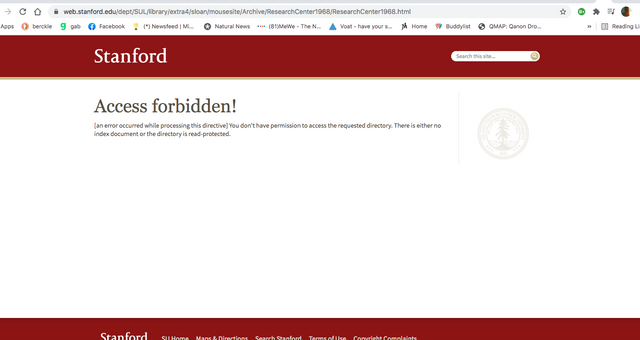
You can check it yourself here,
https://web.stanford.edu/dept/SUL/library/extra4/sloan/mousesite/Archive/ResearchCenter1968/ResearchCenter1968.html
You can check this from the Doug Engelbart Institute
https://dougengelbart.org/content/view/140/000/
https://www.darpa.mil/about-us/timeline/the-mother-of-all-demos
Stated by Darp.MIL
Engelbart's terminal was linked to a large-format video projection system loaned by the NASA Ames Research Center and via telephone lines to a SDS 940 computer (designed specifically for time-sharing among multiple users) 30 miles away in Menlo Park, California, at the Augmentation Research Center, which Engelbart founded at SRI. On a 22-foot-high screen with video insets, the audience could see Engelbart manipulate the mouse and watch as members of his team in Menlo Park joined in the presentation.
With the arrival of the ARPA Network at SRI in 1969, the time-sharing technology that seemed practical with a small number of users became impractical over a distributed network. NLS, however, opened pathways toward today’s astounding range of information technologies.
Come to mention it.. .I have always found this interesting. Did a report years ago but YT threatened my channel so it is not up for public viewing right now, but you can get the gist of it here,
Nervous system manipulation by electromagnetic fields from monitors
https://patents.google.com/patent/US6506148B2/en
**Quantum Computing is not meant to Replace Classical computing, but rather Enhance as it is at an Exponential level.
Cannot measure superposition in certain times
Can only measure basis state as superposition is a Unique State.
Quantum Computing is not a replacement for Classical Computing
Think of it as the Ripple effect.
When you throw a rock into a river, it pushes water out of the way, making a ripple that moves away from where it landed. As the rock falls deeper into the river, the water near the surface rushes back to fill in the space it left behind.
The water usually rushes back too enthusiastically, causing a splash – and the bigger the rock, the bigger the splash. The splash then creates even more ripples that tend to move away from where the rock went into the water.
When water is in its calmest, lowest energy state, it has a flat surface. By throwing the rock into the river, you have given the water some energy. That causes the water to move around, trying to spread out the energy so it can go back to having a still, flat surface.
This follows a powerful principle of physics, which is that everything seeks to find a state where its energy is as small as possible.
One way energy can move around is by forming waves. For example, the waves you see at the beach are formed by energy from the wind. Light and sound also move in waves, though we can’t see that directly. And the ripples that you see in the river are small waves carrying away the energy from where you threw the rock.
Water is also made of molecules. But during a ripple, the water molecules don’t move away from the rock, as you might expect. They actually move up and down. When they move up, they drag the other molecules next to them up – then they move down, dragging the molecules next to them down too.
That’s what creates the peaks and troughs you see on the surface of the water. And that’s how the ripple travels away from your rock
Dragging neighboring water molecules up and down is hard work, and slowly uses up energy, so the ripples get smaller as they get further away. Eventually, the ripples use up all the energy from the rock and the splash, and shrink until we can no longer see them.
Slow Motion Throw of a Rock in the Water
What if we had a model that could manage a 1, 0 or BOTH at the Same Time?
This is what a Qubit is. . .Superposition. . .the ability for a qubit to have multiple states simultaneously until measured.
Therefore; superposition is the physics of Quantum Mechanics that enables particles and waves to be in multiple states until measured at which point they collapse to either a 1 or a 0.
What IS the in between?
Qubits are created by changing the State of certain atoms and other quantum scale particles
- Electrons
- Nucleus (so protons and neutrons)
- Photons. . .the quantum of the electromagnetic field including electromagnetic radiation such as light and radio waves, and the force carrier for the electromagnetic force. Photons are massless,[a] so they always move at the speed of light in vacuum
The photon concept has led to momentous advances in experimental and theoretical physics, including lasers, Bose–Einstein condensation, quantum field theory, and the probabilistic interpretation of quantum mechanics. It has been applied to photochemistry, high-resolution microscopy, and measurements of molecular distances. Recently, photons have been studied as elements of quantum computers, and for applications in optical imaging and optical communication such as quantum cryptography.
The best known example of quantum cryptography is quantum key distribution which offers an information-theoretically secure solution to the key exchange problem. The advantage of quantum cryptography lies in the fact that it allows the completion of various cryptographic tasks that are proven or conjectured to be impossible using only classical (i.e. non-quantum) communication. For example, it is impossible to copy data encoded in a quantum state. If one attempts to read the encoded data, the quantum state will be changed due to wave function collapse (no-cloning theorem). This could be used to detect eavesdropping in quantum key distribution.
To change a photon into a qubit
- Lasers
- Electromagnetic Fields
- Radio Waves
may be used.
As a coin spins, it's neither heads or tails.
It's Only when it comes to a Rest that we know the final result.
What is happening in between? In the Spin?
So the coin as a binary object is technically in Multiple States while in spin.
If it were a qubit, it would be in the state called Superposition.
For Quantum Computing once again. ..we have
Superposition
Entanglement
Interference in algorithms
All can be used.
If you touch the corner of a pool, then another corner it creates waves.
As these waves ripple across, they interact and interfere.
When these waves interfere you can see the height (amplitude) of the waves.
Some grow in amplitude and some disappear [cancel each other out].
This is what is used in a design for Quantum Algorithms.
The notion of some of these waves causing the amplitude of these waves to increase/magnify and some of the waves to disappear.
A Key is encoding your solutions into those waves.
All the possible solutions can become one of these waves.
It goes without saying. ..the wrong solutions you want to interfere and cancel each other out.
Correct solutions you want to interfere and Magnify.
A classical computing model tries each possible solution in sequence until it reaches the correct answer.
A quantum computer would guess Many answers in parallel enabling it to find the solution at quantum speeds.
Qubits can be tied together to create quantum gates which are equivalent to logic gates.
Quantum Gates
take an input
test it
create a new output
In Classical Computing these are Boolean Operators
Hadamard gate operations One application of the Hadamard gate to either a 0 or 1 qubit will produce a quantum state that, if observed, will be a 0 or 1 with equal probability (as seen in the first two operations). This is exactly like flipping a fair coin in the standard probabilistic model of computation.
CNOT Gate The CNOT gate is two-qubit operation, where the first qubit is usually referred to as the control qubit and the second qubit as the target qubit. Expressed in basis states, the CNOT gate: leaves the control qubit unchanged and performs a Pauli-X gate on the target qubit when the control qubit is in state ∣0.
The Pauli-X gate flips the superposition state. This property is the reason why the Pauli-X gate is often called "bit-flip." There is another interesting property to the Pauli-X gate.
The CNOT gate never physically returns a result. It does not output a number or provide some status of the state of the system. Instead, it modifies the underlying probability distribution in a non-collapsing way. Very similar to quantum oracles, which act in the same way.
Gate Refresher from Towards Data Science
A logic gate, whether classical or quantum, is any physical structure or system that takes a set of binary inputs (whether 0s and 1s, apples and oranges, spin-up electrons and spin-down electrons, you name it) and spits out a single binary output: a 1, an orange, a spin-up electron, or even one of two states of superposition. What governs the output is a Boolean function. That sounds fancy and foreboding, but trust me, it’s not. You can think of a Boolean function as nothing more than a rule for how to respond to Yes/No questions. It’s as simple as that. The gates are then combined into circuits, and the circuits into CPUs or other computational components.
Managing qubits is one of the challenges to overcome in Quantum Computing.
Vibration and changes in temperature quickly make them unstable, which can hinder computation or cause errors in the output.
Now let's look at another property of Quantum Computing. ..Entanglement.
Entanglement happens when two quantum systems interact with one another, they become hopelessly entangled partners.
From then on, the state of one system will give you precise information about the state of the other system, no matter how far the two are from one another.
Once entangled they will have precise and instantaneous information about each other.
Just as conventional computers are built bit by bit with transistors that are either On or Off, quantum computers are built qubit by qubit with electrons in spin-states that are either Up or Down (once measured, of course). And just as transistors in On/Off states are strung together to form the logic gates that perform classical computations in digital computers, electrons in Up/Down spin-states are strung together to form the quantum gates that perform quantum calculations in quantum computers. Yet stringing together individual electrons (while preserving their spin states) is far, far easier said than done.
So just where are we?
2017
IBM Just Announced a 50-Qubit Quantum Computer
This is the most sophisticated quantum computer ever.
https://futurism.com/ibm-announced-50-qubit-quantum-computer
6/2020
The World’s Highest Performing Quantum Computer is Here
Get the story behind how Honeywell has delivered the largest quantum volume ever
“What makes our quantum computers so powerful is having the highest quality qubits, with the lowest error rates. This is a combination of using identical, fully connected qubits and precision control,” said Tony Uttley, president of Honeywell Quantum Solutions.
What does a quantum computer look like?
To envision what a quantum computer looks like, let’s step back in time.
“Imagine what you think of computers of 60 years ago looking like where they take up a full room and they have wires running everywhere,” Tony said. “We’re back there.”
First, there is an ultra-high vacuum chamber. It’s a stainless steel sphere, about the size of a basketball, with portals to allow in laser light, and from which the air has been pumped out such that it contains a vacuum of five times less particles than outer space. The chamber is cryogenically cooled with liquid helium to bring the temperature of the ion trap chip to 10 degrees above absolute zero (approximately negative 441 degrees Fahrenheit, colder than the surface temperature of Pluto).
Within the chamber, electric fields levitate individual atoms 0.1 mm above an ion trap, a silicon chip covered in gold about the size of a quarter. Scientists shine lasers at these positively charged atoms to perform quantum operations.
“For context of how small an atom is, if you cup your hands into a sphere, you’re holding about a trillion trillion atoms,” Tony said.
Meanwhile, there is a lot of equipment to control the quantum computer. Control systems are necessary to precisely manipulate the hundreds of independent electrical signals required to move the ions (qubits) in the intricate dance used for quantum information algorithms. Since the operations are all done with lasers, a multitude of optics are aligned across the optical tables, each specified for the correct color of light.
All of this infrastructure takes up roughly two large optical tables (approximately 5 feet wide and 20 feet long), a significant space since the true computing power is harnessed with the few atoms hovering over the trap surface.
https://www.honeywell.com/us/en/news/2020/06/the-worlds-highest-performing-quantum-computer-is-here
Classical Computing uses Physical Gates and operates on Classical Bits
0 or 1
In a classical computer a bit is typically stored in a silicone chip, or on a metal hard drive platter, or on a magnetic tape. About 1010 atoms were used to represent one bit of information in 1999.
Quantum Computing uses Quantum Gates and operates on Qubits
0 or 1 they are Specialized
Properties of an atom can be used in Quantum Computing
Quantum computers can
perform special types of calculations using superposition of multiple Qubits
provide parallelism. . .running many algorithmic calculations at the same time
protons and neutrons are composed of particles called "quarks." These quarks, which come in different "flavors" (up, down, charm, strange, top, bottom) make up certain particles. They have fractional charge. Up, charm, and top all have fractional charge of +2/3, while down, strange, and bottom all have a charge of -1/3. Protons are composed of two up quarks and one down quark, so the total charge is +1. Likewise, neutrons are composed of two down quarks and one up quark, so the total charge is 0.
- entanglement
- interference to implement mathematical calculations out of the reach of even our most advanced current and future supercomputers.
To realize the full promise of quantum computing, we will need to build machines that can compute without errors.
Quantum information is both powerful and delicate, built from qubits (short for quantum bits).
Any external disturbances or "noise," such as heat or vibrations, yank these qubits out of their quantum state and make them into just regular bits.
Overcoming this hurdle requires teamwork. While a large institution could design a quantum computer with hundreds, perhaps thousands of qubits,
a fault-tolerant quantum computer requires a national effort of scientists from the national labs, industry and academia.
These new centers will unite the best minds from across the U.S. R&D sectors to work together on specific quantum-related issues.
From Quantum Institute Yale,
At the core of quantum computing is the qubit. The best ones have a few defining traits, and scientists are looking to everything from lasers to Russian diamonds to help refine the best qubits for the next generation of quantum computing.
In the world of quantum computing, diamonds might be an engineer’s best friend.
That’s because a fabled, super-pure type of gem mined from the Ural Mountains has quantum properties that could provide a promising model for a stable, scalable quantum computer.
To get there, Schoelkopf and others are trying to make qubits into Olympic athletes: strong, resilient, and cooperative in team settings. And they’re looking to the tiniest and purest objects in the universe for the most elite qubit prototypes, since any Schrödinger’s cat-like object that both is and isn’t in a particular state could be the basis for a viable qubit. Three major contenders for the gold medal in qubit-ing are nitrogen-vacancy (NV) centers in diamond lattices, trapped ions, and superconducting qubits—but they all have distinct advantages and disadvantages.
The most amateur qubit, the isolated single atom, obeys one of the most important laws of quantum computing: that qubits need to be completely isolated from the outside world. This is the most basic form a qubit can take. When separated from the outside world in a vacuum, its energy states (sometimes called spin states) store quantum information in a way that is durable and long-lasting.
Too many interactions with the surrounding environment can deflate the integrity of the quantum system and cause it to collapse into a single reality, a process called decoherence.
The problem with the isolated single atom, though, is that its neutral charge means it’s harder to entangle them because they’re not as reactive. And to build real quantum machines capable of super-powered mathematical acrobatics, engineers need to entangle lots of qubits.
“There’s a fundamental tension of trying to keep the isolation from the outside world while simultaneously controlling the quantum bits and making them talk to each other,” Schoelkopf says.
Take away one electron from a neutral atom and you have an ion—a positively charged particle. Ions interact strongly with one another, but scientists have played around with “trapping” ions in an electromagnetic field and then deep-freezing them with lasers to form a crystal of ions. Additional lasers can help nudge the crystals’ ions into a state of entanglement, and multiple crystals linked together subsequently become the building blocks of a larger quantum network.
Trapped-ion qubits can do a lot. They’re easily entangled, plus scientists can turn that interactivity on and off easily so that individual qubits don’t engage with unwanted thermal fluctuations, or heat that would cause the system to decohere. And they’re becoming popular enough that companies like IonQ and Honeywell are investing in technologies that incorporate them.
September 2020 from Science Mag,
IBM promises 1000-qubit quantum computer—a milestone—by 2023
https://www.sciencemag.org/news/2020/09/ibm-promises-1000-qubit-quantum-computer-milestone-2023
“We’re very excited,” says Prineha Narang, co-founder and chief technology officer of Aliro Quantum, a startup that specializes in code that helps higher level software efficiently run on different quantum computers. “We didn’t know the specific milestones and numbers that they’ve announced,” she says. The plan includes building intermediate-size machines of 127 and 433 qubits in 2021 and 2022, respectively, and envisions following up with a million-qubit machine at some unspecified date. Dario Gil, IBM’s director of research, says he is confident his team can keep to the schedule.
Michael Nielsen with Isaac Chuang he is the co-author of a popular textbook titled,
Quantum Computation and Quantum Information
informally and affectionately called Mike and Ike.
You’re going to hear the quantum parallelism story a lot, let’s look at it for a moment.
The basic idea behind quantum parallelism is that quantum computers, unlike their conventional counterparts, explore the full spectrum of possible computational outcomes/solutions simultaneously (i.e. in a single operation), while digital computers must plod along, looking at each solution in sequence.
According to Nielsen, this part of the quantum-parallelism story is roughly right. However, he sharply criticizes the rest of the story, which goes on to say that after surveying the full spectrum of solutions, quantum computers pick out the best one. Now that, according to Nielsen, is a myth. The truth, he insists, is that what quantum computers, like all quantum systems, are really doing behind the scenes is entirely out of our reach. We see the input, and the output, and what happens in between is sealed in mystery.
A gem used with special properties from the Ural Mountains?
From Wired in 2018
Probably the most valuable bauble of all was a minuscule diamond mined from the Ural Mountains. “We called it the ‘magic Russian sample,’” says physicist Kai-Mei Fu of the University of Washington. The diamond was extremely pure—almost all carbon, which isn’t common in this messy world—but with a few impurities that gave it strange quantum mechanical properties.
The company Element Six, owned by De Beers. They’ve long grown synthetic diamonds for drilling and machining, but in 2007, with funding from the European Union, they started making exactly the kind physicists need. And not just physicists, any more: Today, the supply of synthetic quantum diamonds is so abundant that lots of fields are exploring their possible uses.
If you encode information inside a diamond by manipulating its impurities with a laser, the gem’s crystal structure actually protects and preserves that information. Physicists are working to make adjacent impurities interact in a controlled way to execute a primitive algorithm.
Element Six grows these perfectly imperfect diamonds in furnaces at nearly 5,000 degrees Fahrenheit. Starting with a seed diamond, the company’s engineers pump gases—something carbon-containing, like methane, along with hydrogen and nitrogen—into the furnace. As the gas molecules heat up, they separate into single atoms, some of which land on the seed diamond. A few choice nitrogen atoms sneak in, and the hydrogen keeps the carbon layer growing in the right crystal structure. “Carbon doesn’t really want to be diamond,” says Matthew Markham, a scientist at Element Six. “It really prefers to be graphite.”
At Harvard University, physics grad student Jenny Schloss programs Element Six diamonds with lasers and measures how nearby magnetic fields interfere. But before she can do that, she has to mess the diamonds up even more.
The diamonds Element Six sells have nitrogen impurities—but what Schloss’s group needs is a hole right next to it, called a nitrogen vacancy. (Disclosure: Schloss is a friend from college.) So they send their diamonds to a small New Jersey company called Prism Gem.
Most of its business goes to jewelry companies, who ask them to create colored diamonds by knocking carbon atoms out with beams of high-energy electrons. But physicists can use the same process to create more useful holes in their research diamonds.
Prism Gem will shoot electrons at the diamonds for hours—sometimes days—to create the right number of holes. “Typically, scientists know what technical specifications they’re looking for. They’ll send us information on how many electrons they need per centimeter,” says Ashit Gandhi, Prism Gem’s chief technology officer. “Jewelry is more subjective.
They’ll ask for light green, dark green, pink, or whatever.” After sitting under the electron beam, Schloss’s diamond, originally tinted yellow from nitrogen impurities, turns pale blue.
Her group then bakes the diamond again, which causes the holes to migrate next to the nitrogen impurities to create the coveted nitrogen vacancy center. Its final color ranges from clear to pink to red, depending on how many impurities they want.
With the quantum diamond supply chain in place, physicists have been able to study and fiddle with the gems in many iterations of experiments
chloss’s research advisor—knew that when hit with a laser, a nitrogen vacancy diamond would emit different amounts of light if it was near a magnet. The diamond could function as a type of magnetic sensor—one that wasn’t as bulky as current sensors, which also need to be cooled to temperatures near absolute zero.
So in the early 2010s, Lukin and Walsworth’s research team started using the diamonds to study nerve cells, which emit magnetic fields when stimulated. They started with a squid nerve cell, thicker than a human hair. Grad student Matthew Turner traveled to Woods Hole Marine Biological Laboratory, where he excised long, thin white neurons from fresh squid, put them on ice, and jumped on a bus back to the lab to measure its magnetic field under electric stimulation.
Later, the team switched to studying neurons in marine worms, which they could keep in a tank in the lab. About a year ago, they published a paper on the sensitivity of their diamonds to study those neurons. Now, they’re using the diamonds to study magnetic fields given off by human heart cells.
They’re also collaborating directly with Element Six. In return for grant money, the company sends them diamonds.
Element Six is the primary supplier of quantum-grade diamonds. “Right now, if it’s not a monopoly, it’s a near monopoly, especially in terms of access,” says Fu. Schloss and Turner’s lab has purchased poorer quality diamonds from eBay for preliminary experiments, but they haven’t worked well.
Eventually, they’re hoping the diamonds might be useful for imaging inside the human brain, neuron by neuron, something that neuroscientists have yet been unable to do. Or maybe, used in conjunction with other technologies, it’ll illuminate a new corner of the neuroscience puzzle. “I don’t claim to be the best neuroscientist or to have the best tool,” says Turner. “This is just a different tool that I want to understand better.”
Sources
https://answersingenesis.org/noahs-ark/how-long-was-the-original-cubit/
https://www.dwavesys.com/sites/default/files/Dwave_Tech%20Overview2_F.pdf
https://science.osti.gov/About/NQIAC/About
https://www.nsf.gov/funding/pgm_summ.jsp?pims_id=505446
https://www.sciencedirect.com/topics/engineering/hadamard-gate
https://www.quantum-inspire.com/kbase/cnot/
https://towardsdatascience.com/demystifying-quantum-gates-one-qubit-at-a-time-54404ed80640
https://www.icr.org/article/8039/
https://www.wired.com/story/these-perfectly-imperfect-diamonds-are-built-for-quantum-physics/
https://www.sciencemag.org/news/2020/09/ibm-promises-1000-qubit-quantum-computer-milestone-2023
https://quantum-algorithms.herokuapp.com/299/paper/node10.html
https://www.dwavesys.com/sites/default/files/Dwave_Tech%20Overview2_F.pdf
https://www.calvaryhanford.com/bible-studies/topical-studies/prophecy-update-explosion-of-knowledge/
A video report that can be listened to while doing chores or work
Bill Clinton Secret File and Epstein's pathologist same as JFK, Quantum Financial System, Bye FED
https://rumble.com/veq24h-bill-clinton-secret-file-and-epsteins-pathologist-same-as-jfk.html
Robot marriage vid report works in link above
Oh what a tangled Labyrinth we weave. Herbert Hoover Stanford and mining worldwide.
Herbert Hoover was one of the first board members of Stanford Research Institute, the protected research arm of Stanford.
Here is his history and how he had vast reach all over the world while helping to connect the east coast of DC with the west coast and their "projects."
https://www.minds.com/blog/view/1200510509534715904
https://www.computerworld.com/article/2468414/131320-the-mother-of-all-demos-a-retrospective.html
https://www.engadget.com/2018-12-10-mother-of-all-demos-50th-anniversary.html
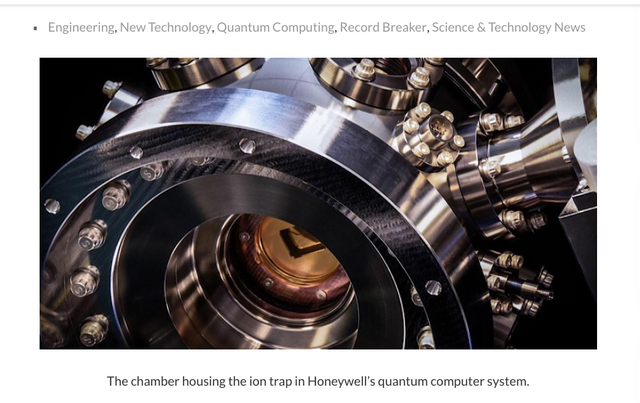
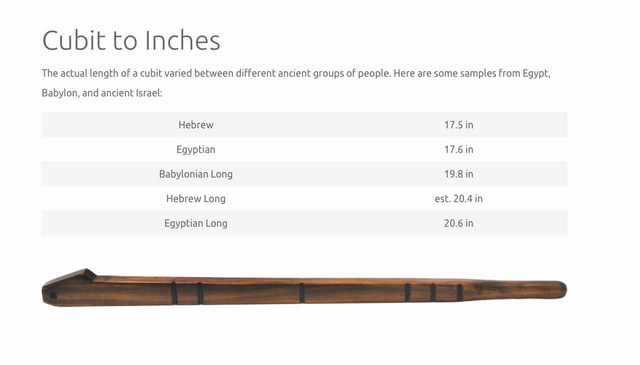
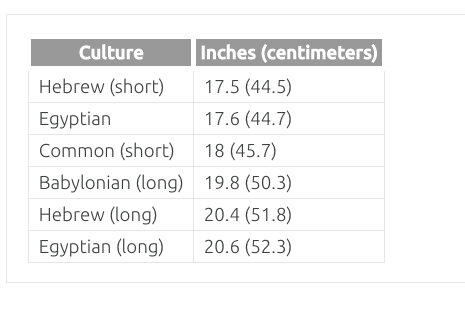
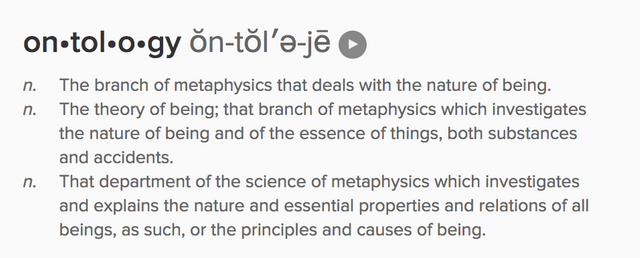
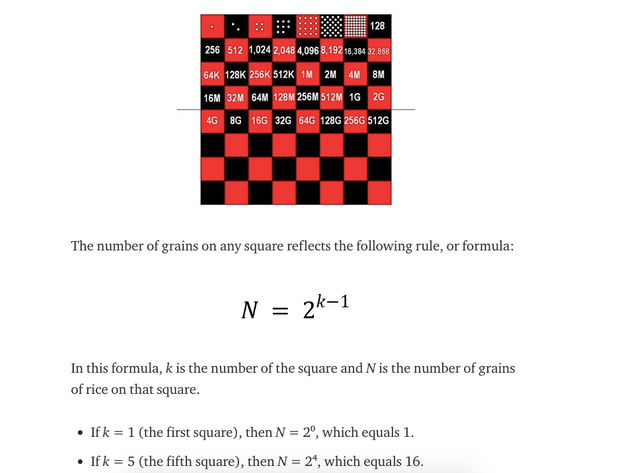
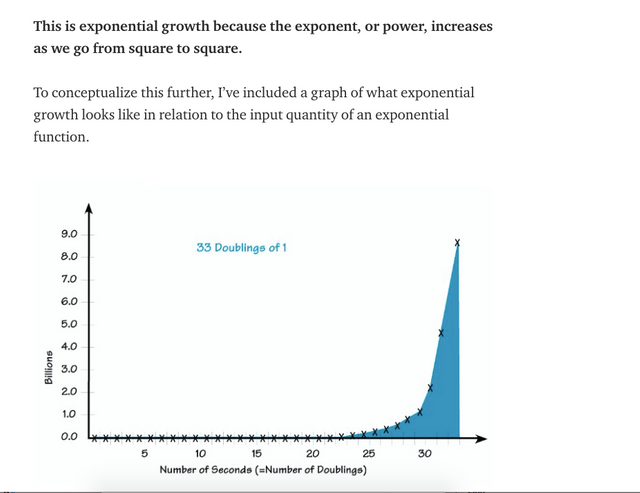

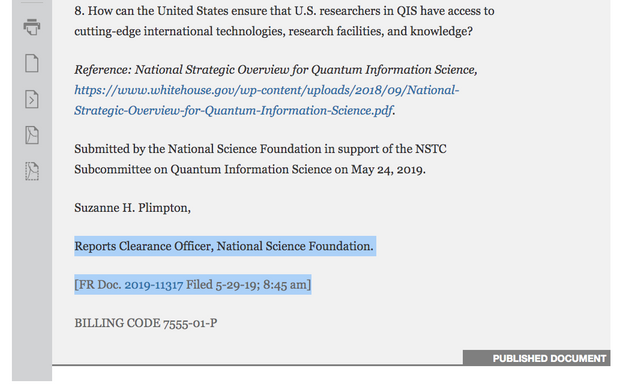
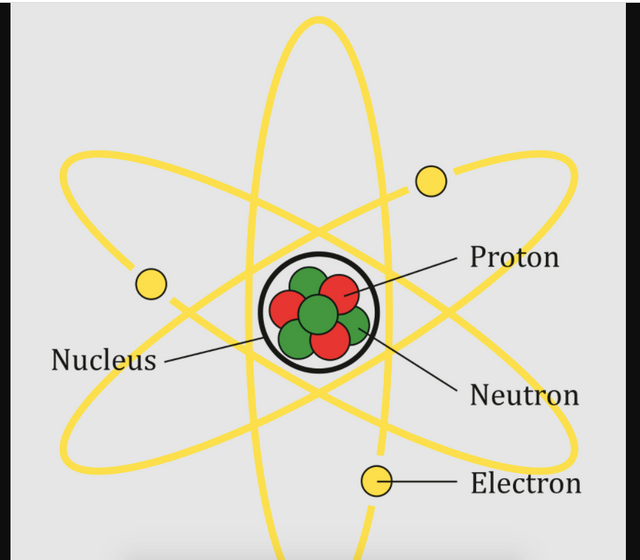
On the Path to Exascale, Q-Exa Consortium Tightens the Bonds Between Quantum Computers and Traditional Supercomputing
November 15, 2021
Nov. 15, 2021 — During a press conference on Nov. 15, 2021, German Federal Minister for Education and Research Anja Karliczek announced the beginning of the Q-Exa consortium, an ambitious project aimed at accelerating European quantum computing technologies with the assistance of traditional high-performance computing (HPC).
Q-Exa brings together experts from academia and industry to deploy a 20-qbit “quantum demonstrator” at the end of 2023 and integrate it into the Leibniz Supercomputing Centre’s (LRZ’s) HPC ecosystem. LRZ, one of the 3 centers comprising the Gauss Centre for Supercomputing, is partnering with quantum computer hardware company IQM, software developer HQS, and supercomputer manufacturer Atos. The project is funded with €40 million and will run for 3 years.
LRZ Director Prof. Dr. Dieter Kranzlmüller indicated that in addition to developing applications for quantum computing, Q-Exa also serves as an important milestone on the path to exascale computing—the next major milestone is traditional HPC, representing a 40-fold increase in supercomputing power from LRZ’s current flagship computer, SuperMUC-NG.
“At LRZ, we are focused on more than just faster computers—we are looking at new ways of computing, and have been developing and implementing our integrated supercomputing architecture,” he said. “The Q-Exa project fits in perfectly with our goals in that regard, and also serves as a foundational piece to our Quantum Integration Centre and the Munich Quantum Valley. With Q-Exa, we are able to enhance our current large-scale computing resources with this quantum demonstrator.”
Kranzlmüller also emphasized that by participating in a co-design project with IQM and HQS, LRZ would be able to bring its decades of experience in bringing new computing technologies to science and industry to a new disruptive computing technology, ensuring that these systems are designed with users from academia and industry in mind and that applications can be ported and scaled to take advantage of the promise of quantum computers.
For more information on the Q-Exa project, read the BMBF press release (in German)
#QExa
https://www.bmbf.de/bmbf/shareddocs/pressemitteilungen/de/2021/11/121121-Wald-und-Holzforschung.html
https://www.hpcwire.com/off-the-wire/on-the-path-to-exascale-q-exa-consortium-tightens-the-bonds-between-quantum-computers-and-traditional-supercomputing/